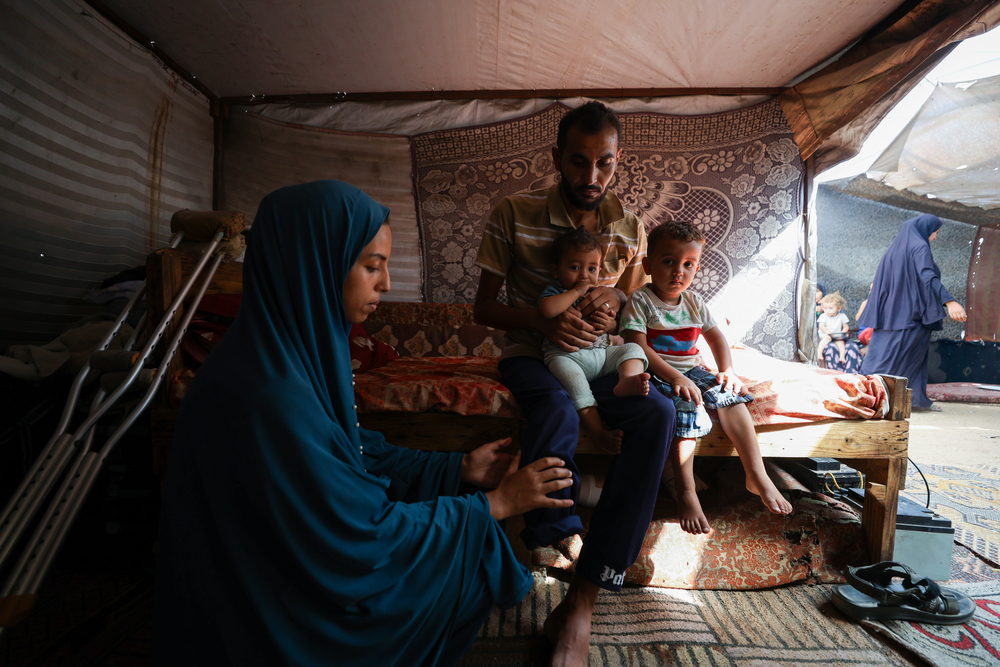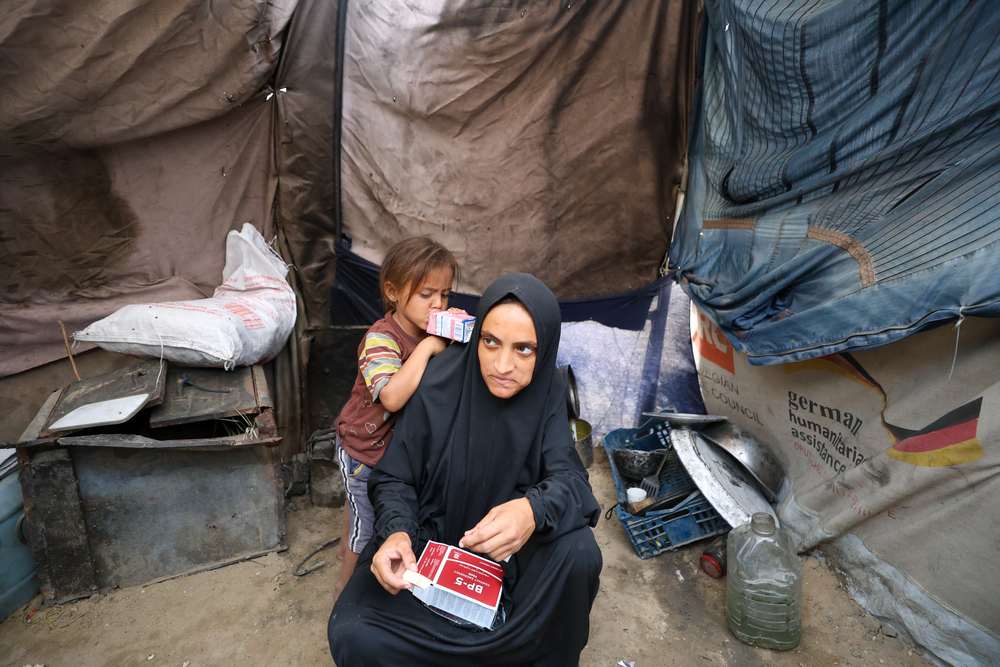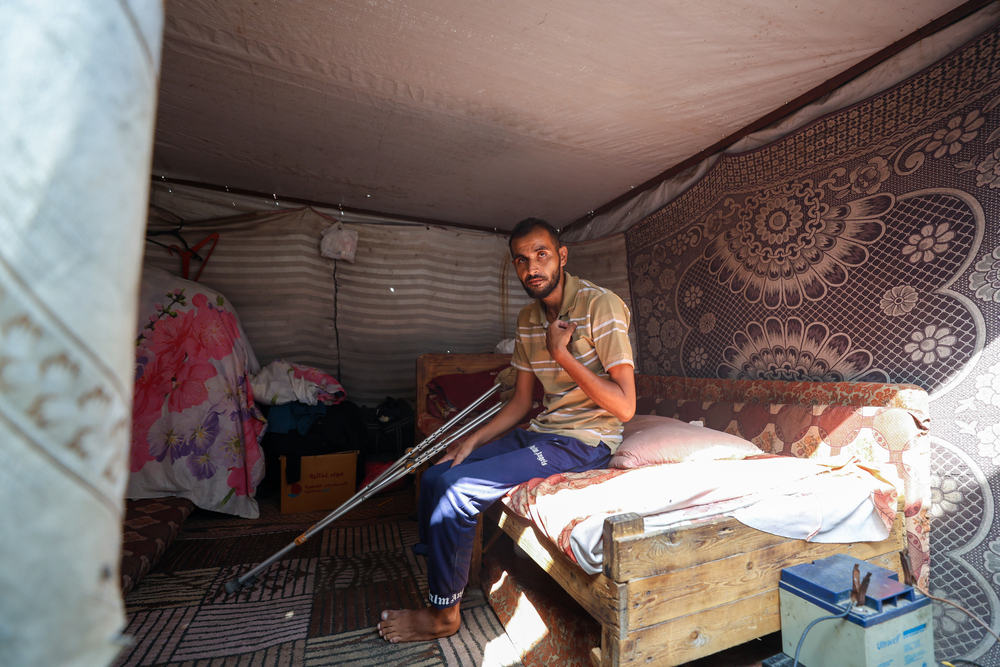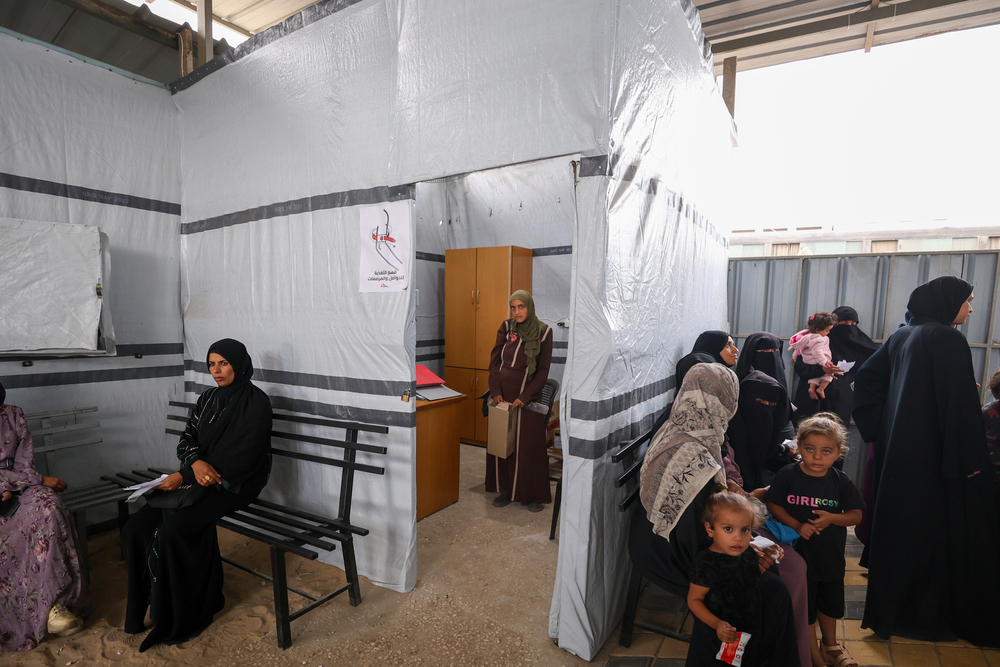Diseases directly linked to poor living conditions account for 70 per cent of all of MSF’s outpatient consultations in our healthcare centres in southern Gaza in 2025.
Jerusalem – More than one million people are still being forced to survive on a tiny patch of land, and in dangerous living conditions, in southern Gaza, Palestine. This displacement, along with the massive destruction of civilian infrastructure and the health system by Israeli forces, is creating the perfect storm for disease and illness to spread, warns Médecins Sans Frontières (MSF). Israeli authorities should immediately allow a massive scale up of humanitarian assistance to flow freely into Gaza.

Despite the ceasefire, people in Gaza continue to endure extreme suffering, as Israel’s two-year-long genocidal campaign has left them traumatised, injured, and dangerously exposed to the elements as winter approaches. Without immediate improvements to water, sanitation, shelter, and nutrition, more people will die from entirely preventable causes.
As the temperature drops, people’s fragile living conditions will heighten their exposure to extreme weather. This, combined with people’s exhaustion, will further heighten health risks.
MSF medical data from 2025 shows that diseases directly linked to poor living conditions, such as skin, eye, respiratory, and gastrointestinal infections, as well as generalised aches and pains, account for 70 per cent of all outpatient consultations in our healthcare centres in southern Gaza.

The collapse of the water and sanitation system — a direct result of targeted destruction and the systematic blockages on reconstruction materials imposed by Israeli authorities — has triggered a surge in waterborne diseases, particularly diarrhoeal illnesses, since the first week of April 2025. Over the past two years, MSF teams have treated more than 78,000 cases of diarrhoea, including over 24,000 cases since April of this year. Many families are unable to acquire or safely prepare food, and limited access to clean water is worsening the situation.
From October 2024 to September 2025, MSF teams at Nasser hospital, in Khan Younis, screened pregnant women for malnutrition, with 1,366 being diagnosed. In Gaza, many mothers are struggling to safely feed their babies — some are so malnourished that they are unable to produce enough breast milk, while ready-to-use infant formula is in short supply. Finding clean water and sterile materials to prepare milk is nearly impossible, and even boiling water has become a challenge, with most families lacking access to cooking gas and resorting to burning scarce and expensive wood.
Recovery from trauma is also compromised by these harsh living conditions. The lack of mobility aids, such as crutches and wheelchairs, makes it extremely difficult for thousands of people with amputations or disabilities to move around tents, access latrines, or reach clinics.

Since May — with a sharper increase from mid-August — MSF teams have observed a significant rise in respiratory tract infections, which are typically more common during the winter months. According to the Ministry of Health, acute respiratory infections now account for 67 per cent of total morbidity.
MSF has also witnessed an increase in skin diseases, including scabies, lice, and other infectious and non-infectious conditions, since mid-August.
The Israeli authorities must immediately allow a massive scale up of unimpeded humanitarian assistance into Gaza, so that people’s suffering and vulnerability to the elements can be addressed.













